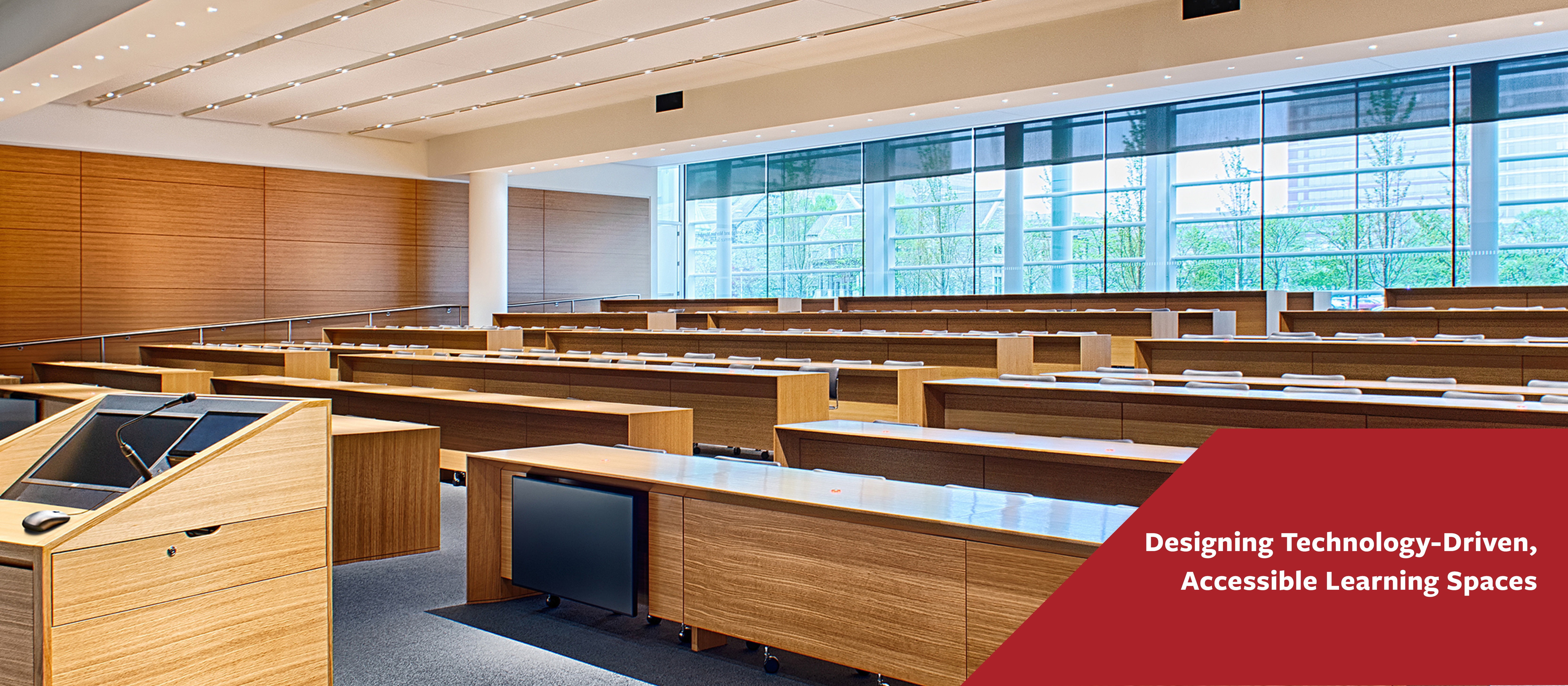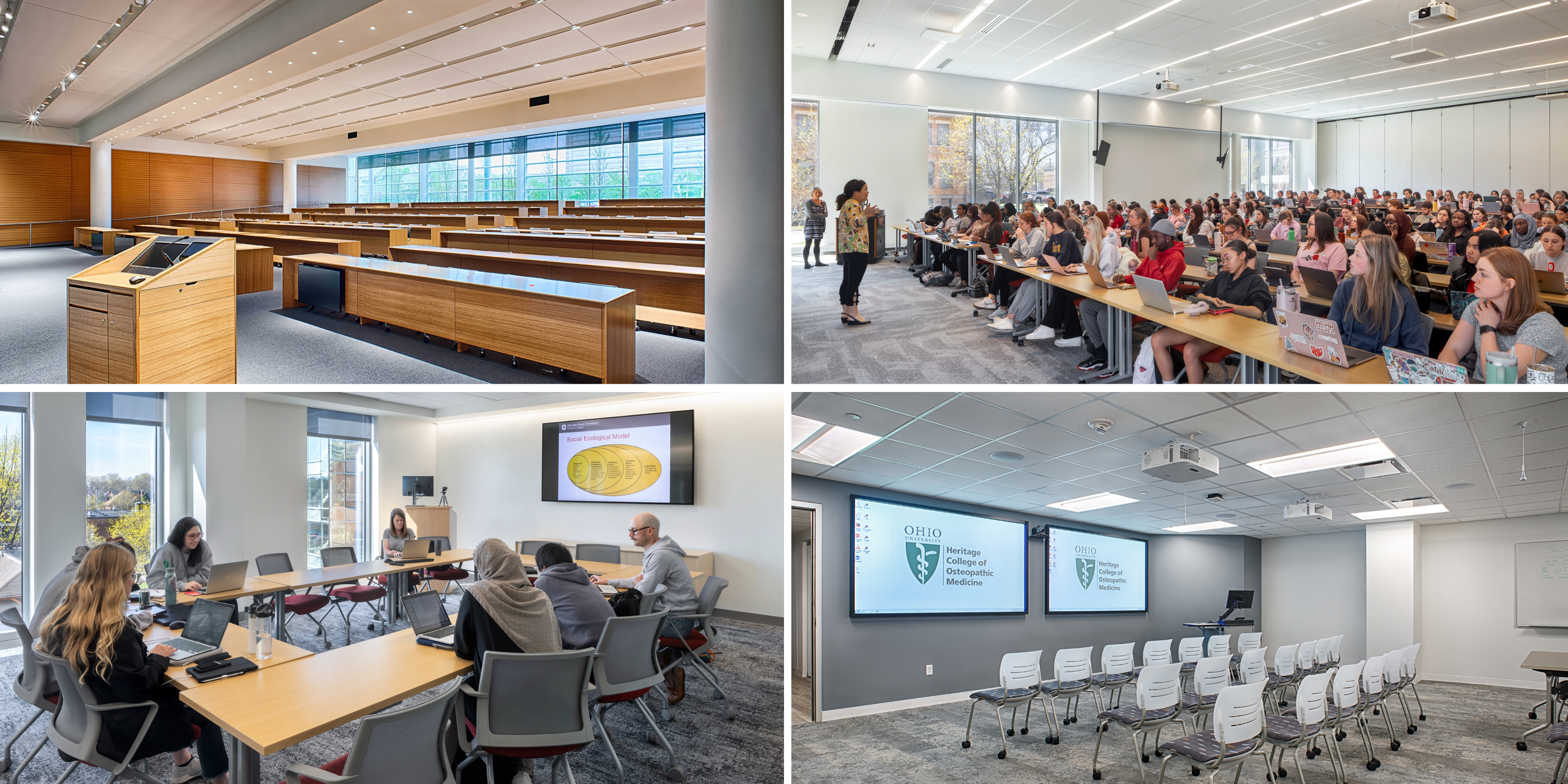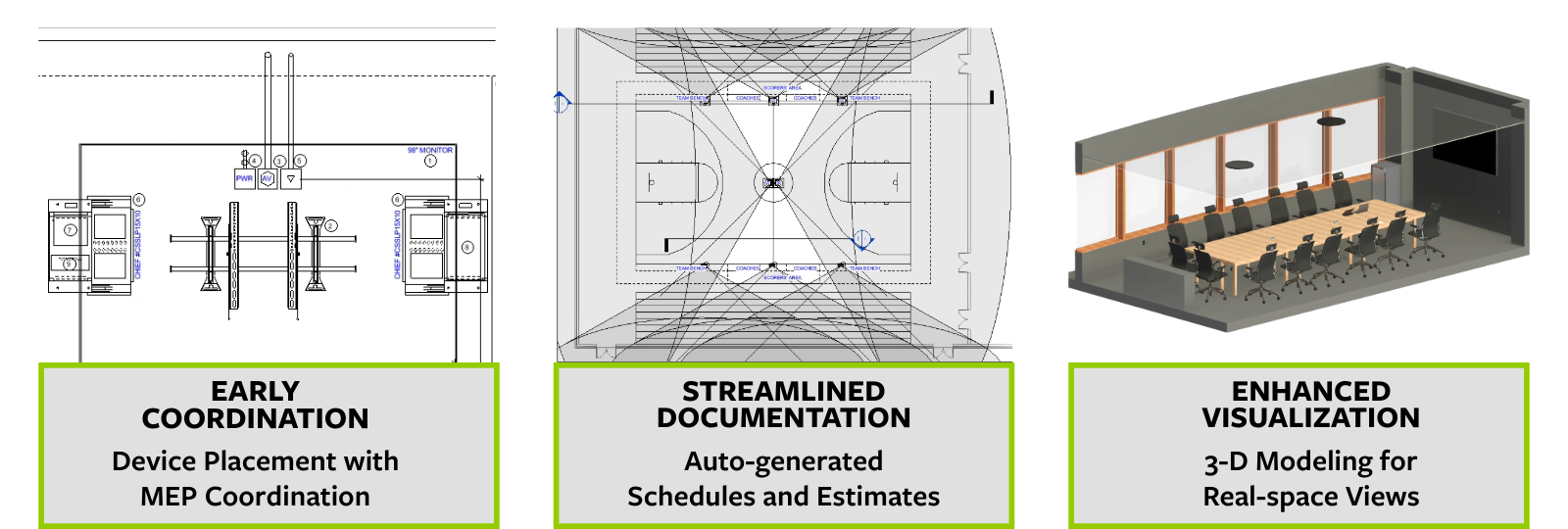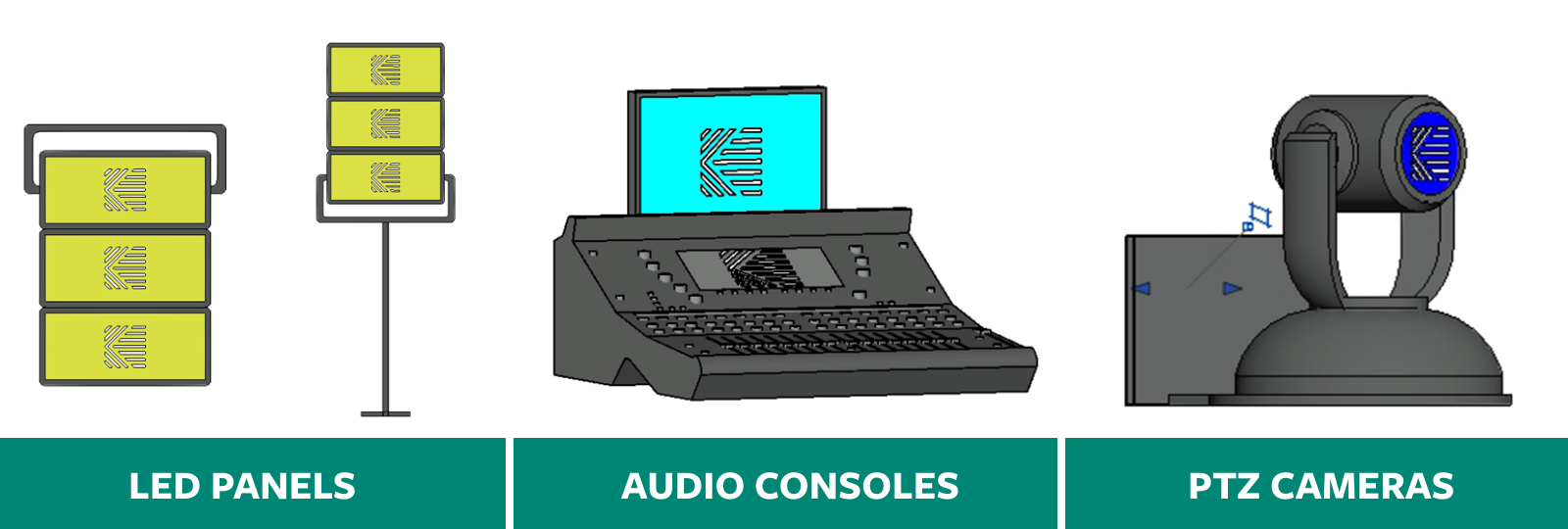Integrating A/V Design into Higher Education
By Travis Stewart | Aug 27, 2025

Audio/Visual systems have become central to creating technology-rich interactive environments. Classrooms, lecture halls, and gathering spaces must now support hybrid teaching, collaborative work, and immersive learning experiences.
Integrating A/V design into architectural and engineering workflows from the start enhances coordination, reduces the risk of conflicts, and contributes to more efficient, effective project delivery. This approach ensures that faculty, students, and staff experience fully functional, technology-ready spaces that meet evolving educational needs.
Trends in A/V Design for Higher Education
Higher education is driving a wave of innovation in A/V. Learning spaces now need to support a variety of teaching methods, whether in-person, hybrid, or fully remote.
Modern learning spaces increasingly feature flexible layouts, multiple display surfaces, wireless microphones, and high-quality audio systems to accommodate both instructors and remote participants.
Collaborative learning labs often include interactive displays, multi-device content sharing, and immersive audio/video setups that encourage group work. Multipurpose spaces, such as auditoriums and student centers, integrate scalable sound systems and streaming capabilities to handle presentations, events, and hybrid learning sessions.

Accessibility is increasingly central to design decisions. Modern A/V systems can support ADA accommodations through closed captioning, transcription technologies, multi-lingual audio streams, and assisted listening systems for in-person attendees. Hybrid and streaming solutions also allow individuals unable to attend physically to engage fully with lectures, events, and collaborative sessions.
Hardware and technology choices reflect both functionality and adaptability. These elements must work seamlessly with each other and with the building’s infrastructure. Sustainability and operational efficiencies are also key considerations, with energy-conscious AV designs that can reduce long-term costs, while maintaining high-quality experiences for users.
Technical Innovations: Integrating A/V Design into BIM
Traditionally, A/V design has been siloed from architectural and engineering workflows. That separation can create delays, coordination issues, unclear requirements, and design clashes discovered late in the process.
A/V teams are increasingly working to embed their work into Building Information Modeling (BIM) environments. While BIM isn’t inherently built for A/V, creative adaptations make integration possible. Customized families represent devices in terms of size, functionality, and aesthetics, allowing them to be modeled alongside AE elements.
This approach yields several advantages:

The result is greater collaboration, fewer RFIs, and more efficient project delivery.
System Integration & Coordination
For higher education projects, understanding how the system will be used, who will use it, and how it will be supported once installed is critical to a successful project. With those insights, A/V teams should design systems tailored to each institution’s cultures and needs, whether it’s a fully equipped hybrid classroom or a straightforward BYOD-enabled learning lab.
By designing in Revit, technical requirements can be validated, while also giving owners and clients a clear, realistic vision of the space. This interdisciplinary approach ensures A/V systems aren’t just “added on” at the end-they’re integral to the building from day one.

As higher education evolves, A/V systems are essential to how institutions teach, collaborate, and connect. For AEC teams, integrating A/V design into BIM workflows is key to creating spaces that are functional and adaptable for the future.
Through early coordination, custom digital tools, and cross-disciplinary collaboration, these A/V solutions can enhance both project delivery and end-user experience, helping colleges and universities achieve their vision for modern learning environments.
Higher Education environments require flexible, technology-driven spaces. Integrating A/V design into architectural and engineering workflows helps create environments that support flexible learning and collaboration. Coordinated, thoughtful design can improve project efficiency, clarify system functionality, and contribute to the long-term adaptability of campus spaces.